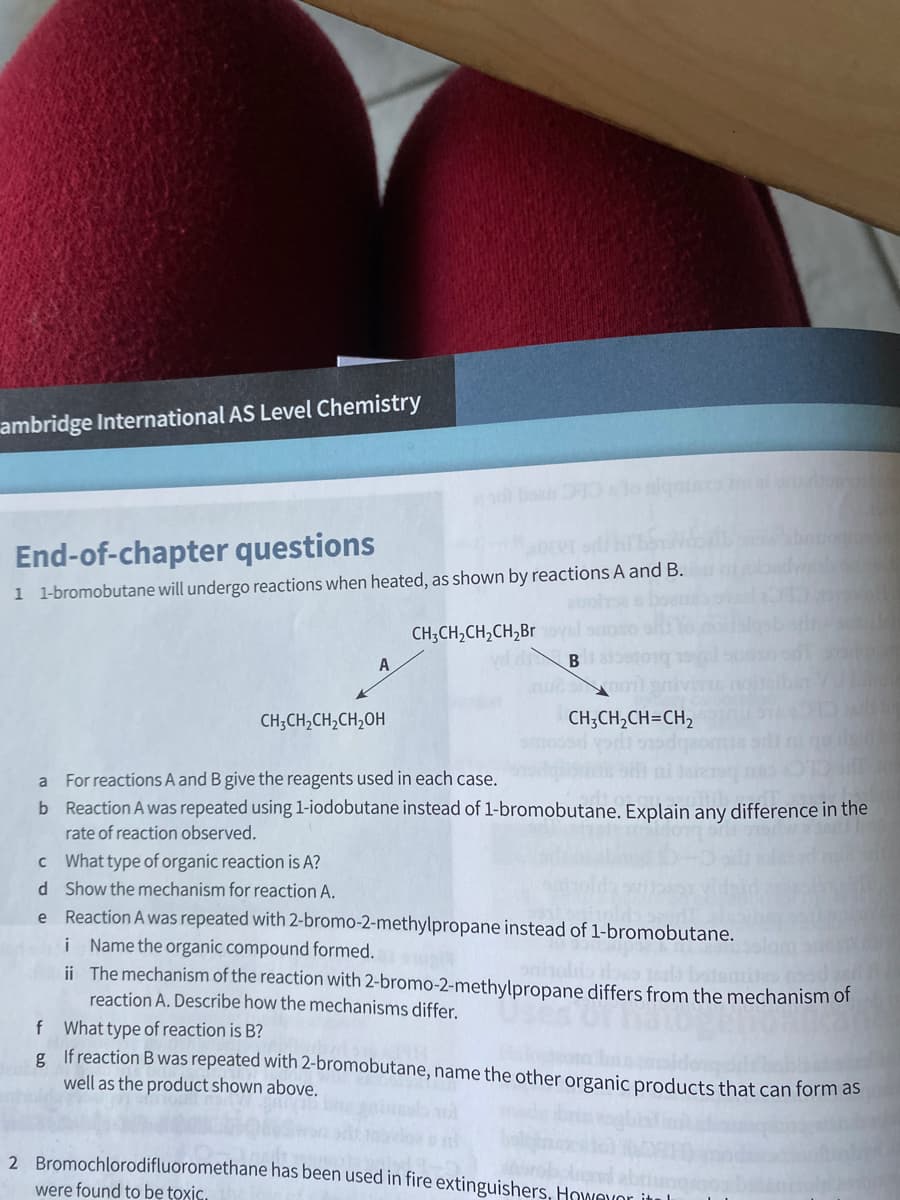End-of-chapter questions 1 1-bromobutane will undergo reactions when heated, as shown by reactions A and B. CH;CH,CH,CH,Br A CH;CH,CH,CH,OH CH;CH,CH=CH, For reactions A and B give the reagents used in each case. b Reaction A was repeated using 1-iodobutane instead of 1-bromobutane. Explain any difference in the a rate of reaction observed. c What type of organic reaction is A?
End-of-chapter questions 1 1-bromobutane will undergo reactions when heated, as shown by reactions A and B. CH;CH,CH,CH,Br A CH;CH,CH,CH,OH CH;CH,CH=CH, For reactions A and B give the reagents used in each case. b Reaction A was repeated using 1-iodobutane instead of 1-bromobutane. Explain any difference in the a rate of reaction observed. c What type of organic reaction is A?
Chapter10: Organohalides
Section10.2: Preparing Alkyl Halides From Alkanes: Radical Halogenation
Problem 4P: Taking the relative reactivities of 1°, 2°, and 3° hydrogen atoms into account, what product(s)...
Related questions
Question
I need parts d,e,f,and g

Transcribed Image Text:ambridge International AS Level Chemistry
End-of-chapter questions
1 1-bromobutane will undergo reactions when heated, as shown by reactions A and B.
CH;CH,CH,CH,Br
CH;CH,CH,CH,OH
CH;CH,CH=CH,
a For reactions A and B give the reagents used in each case.
b Reaction A was repeated using 1-iodobutane instead of 1-bromobutane. Explain any difference in the
rate of reaction observed.
c What type of organic reaction is A?
d Show the mechanism for reaction A.
Reaction A was repeated with 2-bromo-2-methylpropane instead of 1-bromobutane.
i Name the organic compound formed.
ii The mechanism of the reaction with 2-bromo-2-methylpropane differs from the mechanism of
reaction A. Describe how the mechanisms differ.
nies od
f What type of reaction is B?
g Ifreaction B was repeated with 2-bromobutane, name the other organic products that can form as
well as the product shown above.
2 Bromochlorodifluoromethane has been used in fire extinguishers, Howevor itul
were found to be toxic.
Expert Solution
This question has been solved!
Explore an expertly crafted, step-by-step solution for a thorough understanding of key concepts.
This is a popular solution!
Trending now
This is a popular solution!
Step by step
Solved in 4 steps with 3 images

Knowledge Booster
Learn more about
Need a deep-dive on the concept behind this application? Look no further. Learn more about this topic, chemistry and related others by exploring similar questions and additional content below.Recommended textbooks for you

